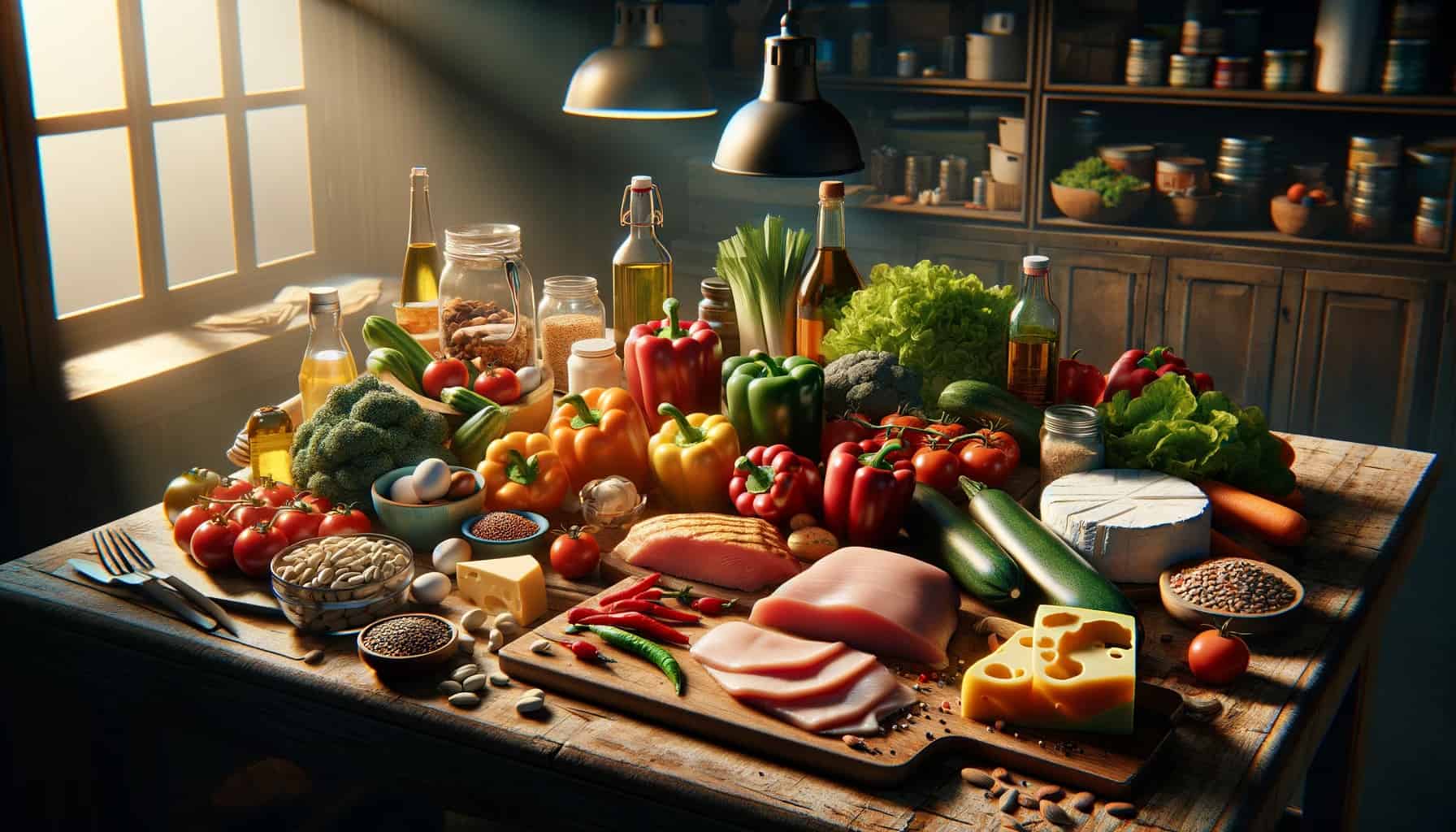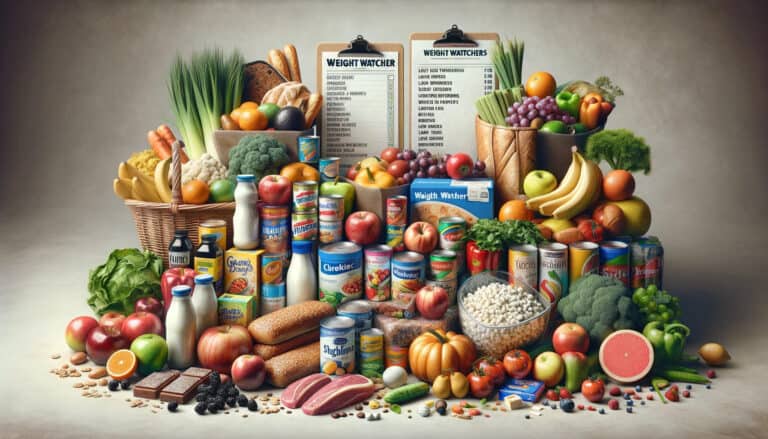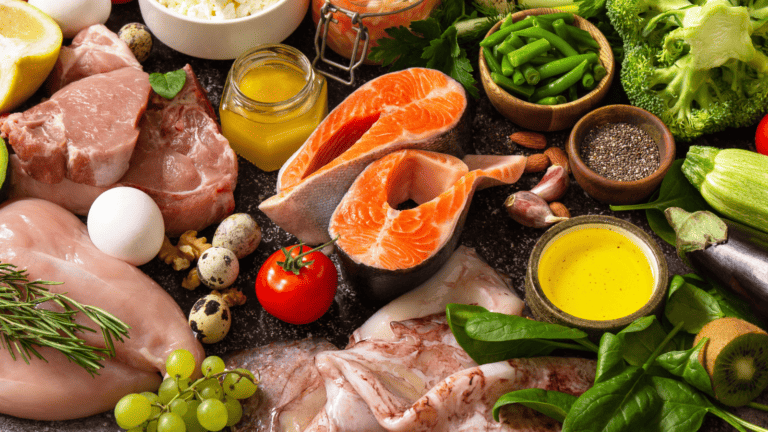Acceptable Low-Carb Foods for Atkins Phase 1 Food List
Embarking on a low-carb diet like the Atkins Diet Plan, conceptualized by Dr. Robert C. Atkins, can offer numerous health benefits. This high-protein diet emphasizes minimizing the intake of foods high in carbohydrates, such as white flour and white bread, while focusing on healthier options.
For example, the Atkins phase 1 food list includes items like cottage cheese, cream cheese, and sunflower seeds, which are low in carbs but high in nutritional value.

The Atkins Nutritional Approach, divided into phases, begins with the Atkins Diet Phase 1, or the induction phase. Your daily net carb intake is significantly reduced, promoting ongoing weight loss.
The goal is not just to reach a goal weight but to achieve overall health improvements, such as reducing the risk of metabolic syndrome, high blood pressure, and even heart attacks.
A vital aspect of this diet is its focus on protein intake. With controlled serving sizes, you can consume foods like ounces of cheese, green beans, and salad dressings made from low-carb ingredients.
It’s a good idea to have a simple low-carb grocery list next time you visit the grocery store, including options like green tea and diet soda for beverages. Club soda, for instance, is an excellent alternative to higher-carb drinks.
Meal plans in this diet often feature low-carb vegetables, which have a low glycemic load and are beneficial for those with health conditions like cardiovascular disease. The Atkins diet plan encourages eating such diet-friendly items while avoiding added sugar and foods with a high glycemic index.
For those on a keto diet, which is another form of a low-carbohydrate diet, the focus is on fat consumption with moderate protein. This can include foods like cream cheese and sunflower seeds, also common in the Atkins approach.
However, both diets emphasize the importance of consulting a healthcare provider, especially for individuals with existing health problems.
Grams of carbohydrates and grams of fiber are meticulously counted in these diets. For example, the Atkins plan recommends that no more than 20 grams of carbohydrates be consumed daily during the first phase. This strict approach helps achieve the weight loss goal and transition into lifetime maintenance.
While such diets can be effective, it’s essential to consider them in the context of your overall health and lifestyle. Fad diets might offer quick results but may not be sustainable or healthy in the long run.
The American Heart Association advises moderation and balance in diet choices. Resources like a food list PDF or free Atkins guides can be helpful.
Phase 1: Limiting Carbohydrate Intake
The main objective of Phase 1 in a weight loss diet is to restrict net carb consumption to no more than 20 grams per day, helping you reach your target weight and lose pounds. By severely reducing net carb intake, the body is forced to burn stored fat for energy instead of relying on carbohydrates.
This can help reduce the risk of heart disease. Adding a handful of nuts, which are low in net carbs, to your diet can be a healthy snack option. One tablespoon (tbsp) of nuts can provide essential nutrients and contribute to a balanced diet.
This metabolic state, ketosis, facilitates rapid weight loss for those following low-carb diets. It helps control hunger cravings by focusing on low-carb foods and vegetables with fewer net carbs.
Acceptable Foods for Phase 1
To effectively achieve ketosis on low-carb diets, people need to stick to the list of acceptable foods provided during Phase 1. This includes keeping track of net carbs in grams. These foods are specifically chosen for their low net carb content, measured in grams.
They also have a high protein and fat content, making them ideal for people conscious of their carbohydrate intake. Some examples include:
- Meat: Beef, pork, lamb, chicken, turkey.

- Fish and Seafood: Salmon, trout, shrimp, crab.

- Eggs: Both whole eggs and egg whites.

- Low-Carb Vegetables: Spinach, kale, lettuce, broccoli.
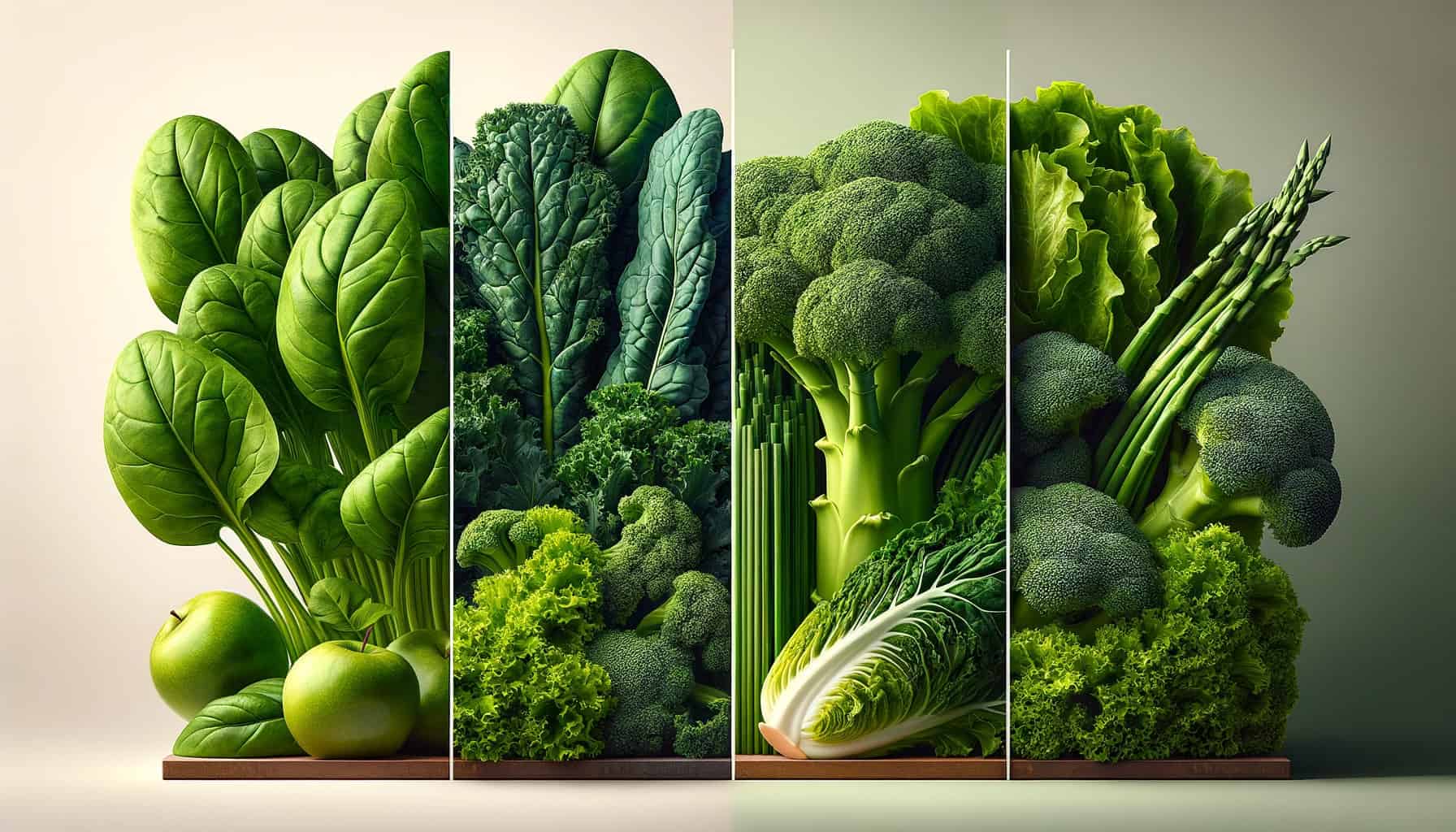
- Healthy Fats: Olive oil, coconut oil, avocados.

These food choices ensure that people following Atkins Phase 1 receive adequate nutrients while keeping net carbs intake, measured in grams, at a minimum.
Benefits of Inducing Ketosis
By strictly adhering to the list of low-carb foods and tracking net carbs in grams, people can experience several benefits by inducing ketosis in the body during Phase 1.
Rapid Weight Loss: Ketosis prompts the body to burn stored fat efficiently for fuel rather than relying on carbohydrates. This process helps people reduce their net carb intake to a few grams per day, which can result in significant weight loss.
The body is forced to rely on fat for energy. Additionally, using ingredients like tbsp of healthy fats can support ketosis and further aid in weight loss.
Reduced Appetite: The higher protein and fat content in these low-carb foods helps promote satiety and curbs hunger cravings. These foods have low net carbs, with only a few grams per cup or tbs.
Blood Sugar Regulation: Limiting carbohydrate intake to a specific number of net carbs in grams can improve blood sugar control, making it beneficial for individuals with diabetes or insulin resistance.
Increased Energy Levels: Many people report increased energy and mental clarity once they enter ketosis. This is because the body uses fat for fuel instead of carbohydrates, resulting in higher energy levels.
Additionally, by consuming a diet low in net carbs and high in healthy fats, such as avocados and nuts, individuals can experience sustained energy throughout the day. Consuming around 20-50 grams of net carbs per day and adjusting portion sizes accordingly (e.g., 1 cup of vegetables or 1 tbs of almond butter) is recommended.
Conclusion
Atkins Phase 1 is a strict but effective way to kickstart weight loss by limiting net carbs intake to induce ketosis in the body. This involves reducing carbohydrate intake to a maximum of 20g per day.
Following the list of acceptable foods provided during this TBS phase, individuals can experience rapid weight loss, reduced appetite, improved blood sugar control, and increased energy levels. Cup
Understanding Atkins 20, Phase 1: Induction
The Atkins Diet is a popular low-carb, high-fat diet focusing on weight loss. It involves limiting your intake of carbohydrates while increasing your consumption of fats and protein. Individuals can effectively achieve their weight loss goals by following the Atkins Diet.
It involves reducing carbohydrate intake and increasing protein and fat consumption. Additionally, it is recommended to measure food portions using a measuring cup to track macronutrients accurately.
The diet consists of four phases, with each phase gradually reintroducing carbs. You must measure your food intake in each stage using a measuring cup.
Induction is the Atkins Diet’s initial phase and typically lasts about two weeks. During this phase, measuring your food portions using a measuring cup is essential. The primary goal of this phase is to switch the body into a state of ketosis, which is like turning on a switch inside your body.
It’s like filling up a cup with ketones and getting your body to use them for energy. Ketosis occurs when the body burns fat for fuel instead of carbohydrates. This metabolic state is like switching from a fuel tank filled with carbohydrates to one filled with fat.
It’s as if the body swaps out its usual cup of carbs for a cup of fat, using it as its primary energy source. During Induction, individuals are advised to limit their carbohydrate intake to approximately 20 grams per day, equivalent to about one cup.
Transitioning from Phase 1 to Phase 2 is essential to the Atkins Diet journey. During this phase, measuring your food portions using a measuring cup is necessary to ensure you follow the diet correctly. After completing Induction, individuals can move on to Phase 2, where they can enjoy a refreshing cup.
In this phase, more vegetables are added to the diet while maintaining weight loss goals. Additionally, a cup is recommended to measure portion sizes accurately. Although carb intake increases slightly during this phase, it remains controlled and monitored. The amount of carbs consumed is calculated using a cup to ensure proper portion sizes.
Phase 2 allows for a gradual increase in carbohydrate consumption as long as weight loss continues steadily. During this phase, you can enjoy your favorite foods while losing weight. Remember to keep track of your portion sizes and use a measuring cup when serving yourself.
It’s important to note that everyone’s tolerance for carbs varies, so it’s crucial to pay attention to how your body responds to different foods during this phase. Whether you’re eating a slice of bread or enjoying a cup of pasta, understanding your body’s reaction is critical.
During both Phase 1 and Phase 2 of the Atkins Diet, acceptable low-carb foods, such as a cup, can be included in your meal plan.
Acceptable Low-Carb Foods for Atkins Phase 1 Food List:
- Proteins: Include options like eggs, poultry (chicken or turkey), fish (such as salmon or tuna), shellfish (like shrimp or crab), lean cuts of meat, and a cup.
- Vegetables: Focus on non-starchy vegetables such as leafy greens (spinach, kale), broccoli, cauliflower, bell peppers, zucchini, cucumbers, and cups.
- Fats: Incorporate healthy fats like olive oil, avocado oil, coconut oil, butter, full-fat cheese, and cup.
- Beverages: Drink plenty of water, herbal tea, and unsweetened coffee or tea in a cup.
During Phase 1, avoiding high-carb foods and opting for healthier choices is crucial. It’s essential to remember that portion control plays a significant role in managing your diet. For example, instead of indulging in a large bowl of pasta, try using a smaller cup to measure your portions.
This simple swap can make a big difference in your overall carb intake. These include grains (such as rice, quinoa, and oats), starchy vegetables (like potatoes and corn), sugary drinks, sweets, processed foods, and cups.
Comprehensive Low-Carb Foods List
Foundation Vegetables
Foundation vegetables, such as cups, are crucial to the Atkins Diet’s Phase 1. These low-carb veggies add variety to your meals and provide vital nutrients while keeping carb counts in check. Whether you enjoy them raw or cooked, a cup of these veggies is an excellent addition to your diet.
Leafy greens like spinach and kale are excellent options, packed with vitamins and minerals. Whether you enjoy them in a salad or a smoothie, a cup of these nutrient-rich greens can boost your diet. Cruciferous vegetables such as broccoli and cauliflower are also allowed on the list, offering a satisfying crunch and fiber content. Additionally, these vegetables can be enjoyed in a cup.
Protein Sources
Protein plays a crucial role in the success of the Atkins Diet, especially during Phase 1. One way to ensure you get enough protein is by measuring it using a cup. It helps keep you feeling full and satisfied while promoting muscle maintenance. The diet allows for a wide range of protein sources to choose from.
Meat lovers can enjoy beef, chicken, pork, and lamb options. Poultry such as turkey and duck are also acceptable choices. Fish enthusiasts can indulge in salmon, tuna, cod, or other seafood that tickles their taste buds. Tofu is a fantastic plant-based protein option for vegetarians or vegans following the Atkins Diet.
Fats and Oils
Contrary to popular belief, fats are not entirely off-limits on the Atkins Diet; however, choosing healthy fats that support overall well-being is essential. Incorporating these fats into your meals can help keep you satiated throughout the day.
Olive oil is excellent for cooking and salads because it’s heart-healthy. Avocado oil is also a good choice with its high smoke point and rich flavor. Coconut oil is widely used in low-carb cooking due to its unique medium-chain triglycerides (MCTs), which may aid in weight loss.
Including low-carb foods in your Phase 1 Atkins diet can help you start ketosis and achieve success. Your body burns fat for fuel instead of carbohydrates in this metabolic state.
Including foundation vegetables like spinach, kale, broccoli, and cauliflower in your meals ensures low-carb content and abundant essential vitamins and minerals. Protein sources such as meat, poultry, fish, eggs, and tofu provide the necessary building blocks for muscle maintenance and satiety.
Don’t shy away from healthy fats like olive oil, avocado oil, and coconut oil. They not only enhance the flavor of your dishes but also keep you satisfied for extended periods.
Acceptable Meats on Atkins Induction
Meat Varieties
A wide range of meats are allowed in Phase 1 of the Atkins Diet. You can enjoy meats like beef, pork, lamb, and venison. These options provide a great source of protein to support your body during the initial phase of the diet.
However, it is important to choose lean cuts whenever possible. This helps to reduce the intake of excessive fats and promotes a healthier approach to your low-carb journey.
Poultry Choices
Poultry is another excellent source of protein that you can include in your Atkins Induction phase. Various options include chicken, turkey, duck, and quail. These poultry choices offer a leaner alternative to some other meat varieties.
To further reduce fat content, removing the skin before consumption is advised. This way, you can still enjoy delicious meals while keeping your carb count in check.
Fish and Shellfish Options
Fish and shellfish are great options for seafood lovers or those seeking variety in their low-carb diet during the Atkins Induction phase. They are rich protein sources and provide healthy fats essential for overall well-being.
Some examples include salmon, tuna, shrimp, crab, and mussels. Incorporating these into your meals will add flavor and enhance nutritional value.
When selecting fish and shellfish for your meals on Atkins Induction, opt for wild-caught varieties whenever possible. Wild-caught fish tend to be higher in beneficial omega-3 fatty acids than farm-raised alternatives.
By including these acceptable meats in your Atkins Phase 1 food list, you can create many delicious meals while staying true to the low-carb principles outlined by Dr. Robert C. Atkins himself.
Remember that portion control is vital when consuming meats and poultry on this diet plan. Be mindful of your serving sizes and aim for a balanced plate that includes plenty of non-starchy vegetables alongside your protein source.
Eggs and Dairy on Atkins Phase 1
Eggs in Any Style
Eggs are a versatile and tasty addition to the Atkins Diet. They can be enjoyed during Phase 1, such as scrambled, boiled, poached, or in omelet form. They are easy to prepare and provide an excellent source of protein and healthy fats to satisfy you throughout the day.
Cheese Varieties for Low-Carb Diets
Many low-carb options, such as cheddar, mozzarella, and Swiss cheese, work for the Atkins Diet. These varieties can be included in your Phase 1 meal plan. However, it’s important to keep portion sizes in mind, as some cheeses can be high in calories.
Adding eggs to the Atkins Diet adds variety and flavor. You can combine different cooking methods with vegetables or meats for more taste. For example, try making a vegetable omelet by combining sautéed spinach, mushrooms, onions, bell peppers, and beaten eggs.
Cheese lovers will be pleased to know they don’t have to give up their favorite dairy product while on Phase 1 of the Atkins Diet. Adding grated cheddar cheese to your scrambled eggs or sprinkling mozzarella over a salad can enhance the taste without adding excessive carbs. Just remember to consume cheese in moderation as part of a balanced diet.
Incorporating eggs and dairy into your meals during Phase 1 provides essential nutrients and adds variety to your daily menu. These foods offer a good balance of protein and fat while low in carbohydrates. Including them alongside acceptable meats can help create satisfying meals that keep you on track with your weight loss goals.
Safe Beverages and Sweeteners
Beverages to Consume
Water is the ultimate go-to beverage choice when following the Atkins Diet. It’s refreshing, hydrating, and contains zero carbs, making it an excellent option for quenching your thirst. Staying adequately hydrated is crucial for overall health and weight loss success on the Atkins diet.
If you want something more flavor, unsweetened tea or coffee can be enjoyed in Phase 1 of the Atkins Diet. These beverages are low in carbs and can boost your morning routine or afternoon pick-me-up.
Artificial Sweeteners Approved
While sugar is off-limits during Phase 1 of the Atkins Diet, there are some artificial sweeteners that you can use sparingly as alternatives. These sweeteners add sweetness to your food and drinks without adding unnecessary carbs.
One popular option is stevia, which comes from the leaves of a South American plant. Stevia is known for its intense sweetness but has zero calories and does not raise blood sugar levels. It can be used in moderation as a natural sugar substitute in coffee, tea, or other recipes.
Another approved sweetener is sucralose-based products like Splenda. Sucralose is derived from sugar but undergoes a process that makes it non-caloric and safe for consumption on low-carb diets like Atkins Phase 1. Splenda can be used in cooking or baking, providing sweetness without reducing carb intake.
When incorporating artificial sweeteners into your diet, it’s important to remember that moderation is vital. While they may be allowed on the Atkins Diet, excessive consumption could hinder weight loss progress or negatively affect your health.
By opting for water as your primary beverage choice and incorporating approved artificial sweeteners sparingly into your diet, you can enjoy flavorful options while staying within the guidelines of Phase 1 of the Atkins Diet.
Planning Your Meals on Atkins Phase 1
Sample Menu and Foods
Having a sample menu can be incredibly helpful. It provides ideas and inspiration for creating delicious and satisfying meals while following the program’s guidelines.
Consider starting your day with an omelet with veggies like spinach, mushrooms, and bell peppers for breakfast. This will give you good protein and nutrients to fuel your morning.

Lunchtime requires something light yet filling, such as a grilled chicken salad. Load up on leafy greens like romaine lettuce or mixed greens, and add some cherry tomatoes, cucumbers, and avocado slices for healthy fats.
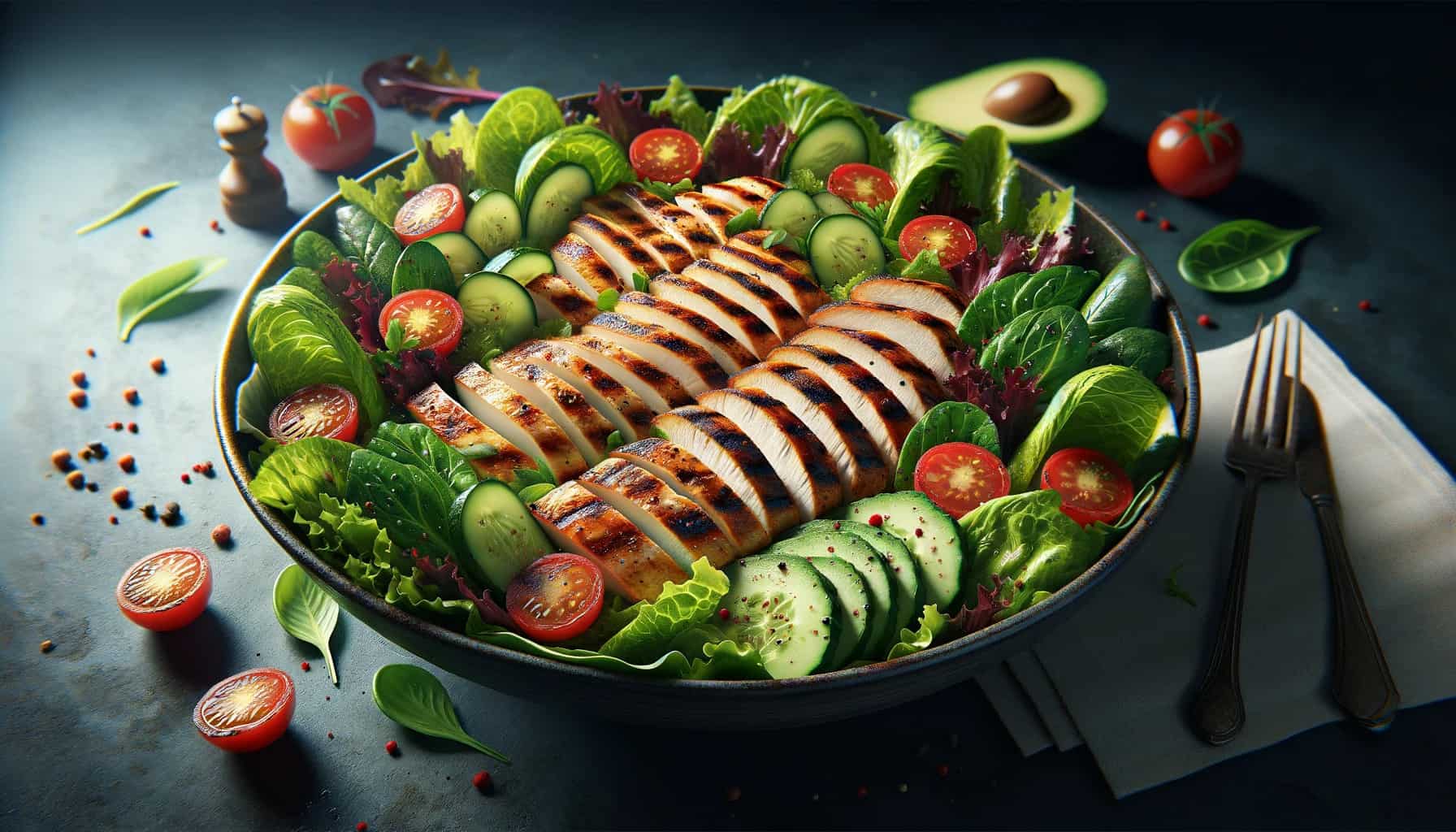
Moving on to dinner, indulge in a juicy steak paired with roasted vegetables like cauliflower and Brussels sprouts. Combining high-quality protein from the steak and fiber-rich veggies will satisfy you throughout the evening.

When hunger strikes between meals, reach for snacks low in carbs but still satisfying. Celery sticks dipped in almond butter make for a crunchy, creamy treat that won’t derail your progress.
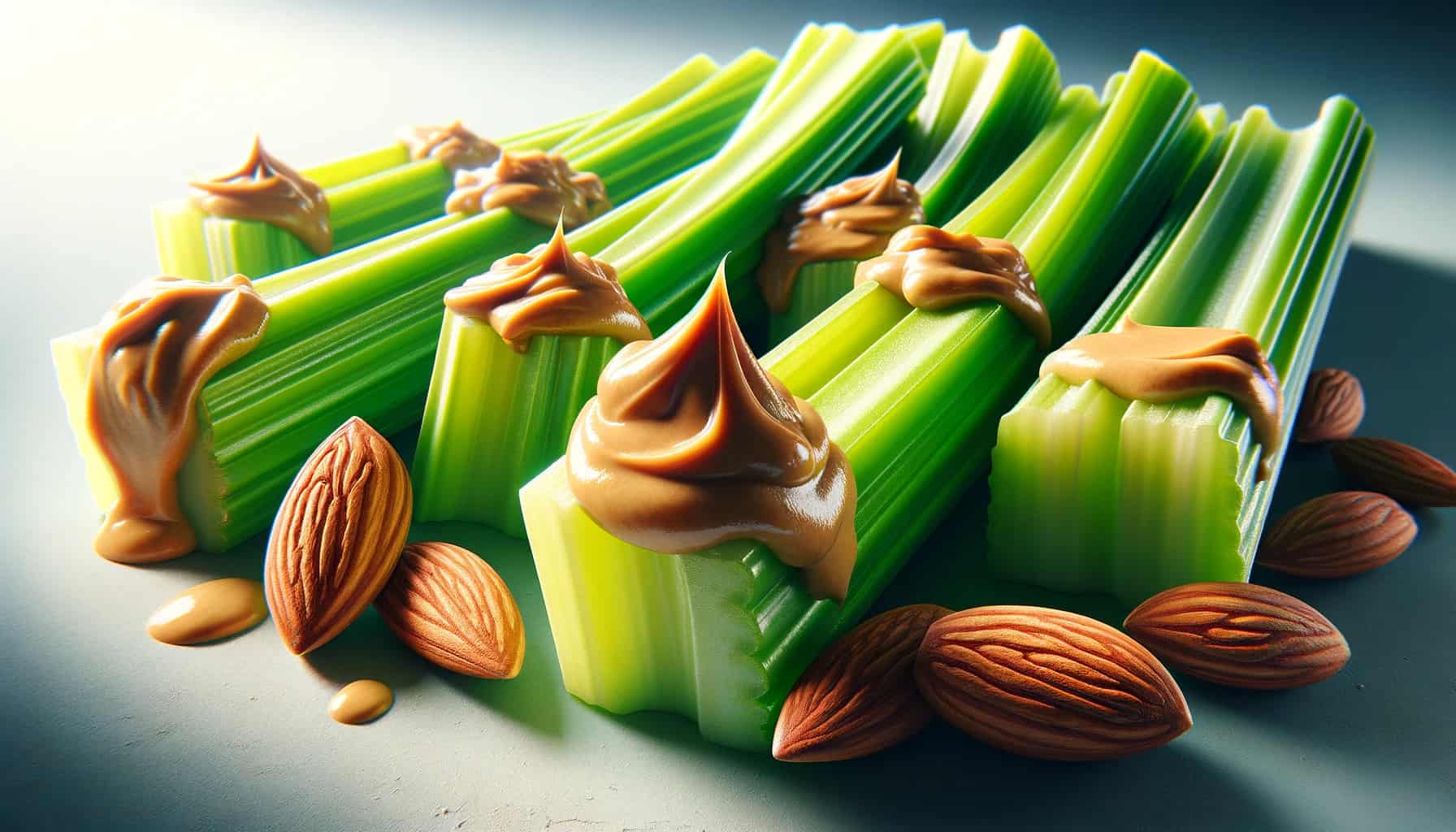
Stocking Your Kitchen
To set yourself up for success on the Atkins Diet during Phase 1, it’s essential to stock your kitchen with the right foods. Having these items readily available will make you less likely to veer off track and more likely to stick to your goals.
Firstly, focus on lean meats such as chicken breast, turkey breast, fish fillets (like salmon or cod), and lean cuts of beef or pork. These protein sources will provide essential nutrients while keeping carb intake low.
Next up are low-carb vegetables that should feature prominently in your kitchen. Opt for options like broccoli, cauliflower, zucchini, spinach, kale, and bell peppers. These veggies are low in carbs and packed with vitamins and minerals.
Healthy fats are also a crucial component of the Atkins Diet. Stock up on olive, avocado, coconut, and butter. These fats can be used for cooking or drizzled over salads to add flavor and satiety.
Lastly, don’t forget about eggs! They are a versatile and affordable source of protein that can be enjoyed in various ways. Whether you prefer scrambled eggs, hard-boiled eggs, or omelets, having plenty of eggs in your kitchen will ensure you always have a quick and nutritious meal option.
Comparing Atkins with Other Diets
Atkins vs. Keto
The Atkins Diet and the ketogenic diet are both popular low-carb diets, but they have different approaches. While both diets focus on reducing carbohydrate intake, the Atkins Diet is structured with phases, whereas keto is a continuous state of ketosis.
The Atkins Diet starts with Phase 1, or Induction, where carbohydrate consumption is limited to 20 grams daily. As you move through the phases, you increase your carb intake until it’s sustainable for weight maintenance.
On the other hand, the ketogenic diet requires you to maintain a consistent state of ketosis by keeping your carbs extremely low (usually below 50 grams per day) and increasing fat consumption.
Effectiveness for Belly Fat Loss
The Atkins Diet can be a practical choice. Reducing carbohydrate intake helps target visceral fat that accumulates around the abdomen. This fat is dangerous because it surrounds organs and can cause problems like insulin resistance and heart disease.
By following the low-carb approach of the Atkins Diet and combining it with regular exercise, individuals may experience significant results in reducing belly fat. Spot reduction is not possible. However, people may eventually see less belly fat by losing weight overall through diet and exercise.
Studies have shown that low-carb diets like Atkins can lead to more significant initial weight loss than other diets with higher carbohydrates. This can motivate individuals looking to kickstart their weight loss journey or those who have struggled with stubborn belly fat.
Balancing Carbs for Optimal Results
Carbohydrate Allowance Per Day
During Phase 1 of the Atkins diet, individuals are advised to limit their carbohydrate intake to approximately 20 grams daily. Ketosis is essential for starting the body’s metabolic state. The carbohydrate allowance increases as the diet progresses.
However, it’s important to note that each person’s needs may vary, so it’s essential to consult a healthcare professional or registered dietitian to determine an appropriate carbohydrate intake.
Using Body Fat as Fuel
During Phase 1 of the Atkins diet, people switch their bodies’ energy source from glucose to stored fat by limiting carbohydrates. This metabolic process is known as ketosis.
When the body enters ketosis, it becomes more efficient at utilizing fat stores for fuel, leading to weight loss and increased energy levels.
During ketosis, the liver produces molecules called ketones from fatty acids. Ketones are used as a backup fuel for the brain and organs when there’s not enough glucose from carbs. Not only does this help with weight loss, but it also provides a steady supply of energy throughout the day.
Balancing Blood Sugar Levels
One of the key benefits of limiting carb intake during Phase 1 of the Atkins diet is its impact on blood sugar levels. By reducing carb consumption, individuals can prevent spikes in blood sugar and insulin levels that often occur after consuming high-carb meals.
When we consume carbohydrates, they are broken down into glucose and enter our bloodstream, causing blood sugar levels to rise. In response, our bodies release insulin—a hormone that helps regulate blood sugar by facilitating its entry into cells for energy or storage.
However, excessive carb consumption can lead to chronically elevated blood sugar and insulin levels—conditions associated with weight gain, insulin resistance, and an increased risk of developing type 2 diabetes.
By limiting carb intake to around 20 grams per day during Phase 1, individuals can maintain more stable blood sugar levels, reducing the risk of these health issues.
Net Carbs: The Atkins Approach
The concept of “net carbs” is central to the Atkins diet. Net carbs refer to the total carbohydrate content in a food item minus its fiber and sugar alcohol content. Fiber and sugar alcohols are subtracted because they have minimal impact on blood sugar levels.
FAQs and Tips for Atkins Phase 1 Success
Addressing Common Concerns
One of the common concerns or misconceptions about the Atkins Diet is the potential for nutrient deficiencies. While it’s true that cutting out certain food groups can limit your intake of certain nutrients, following a well-balanced, low-carb meal plan can help mitigate this issue.
You can get a good mix of essential vitamins and minerals by incorporating various acceptable low-carb foods from different food groups.
Another concern often raised is the sustainability of the Atkins Diet in the long term. Some worry that they won’t be able to stick to such a restrictive eating plan indefinitely. However, it’s important to note that Atkins is not meant to be followed in its strictest form forever.
Phase 1, the Induction phase, is the initial stage where carbohydrate intake is limited to jumpstart weight loss. As you progress through the phases, more foods are gradually reintroduced into your diet.
Low-Carb Diet Tips for Beginners
If you’re new to low-carb diets like Atkins, here are some tips to help you get started on the right track:
- Meal Planning: Take some time each week to plan out your meals and snacks. This will make it easier to stick to your low-carb goals and avoid impulsive food choices.
- Read Food Labels Carefully: Pay close attention to nutrition labels when shopping. Look for hidden sources of carbs like added sugars or starches that may hinder your progress.
- Stay Hydrated Throughout the Day: Drinking enough water is crucial for overall health and can help curb cravings. Aim for at least eight glasses per day.
By incorporating these tips into your routine, you’ll set yourself up for success on Atkins Phase 1.
The Atkins Diet in the Academic and Public Spheres
Recommended Courses and Universities
Several courses and universities, like Atkins, offer education on nutrition or dietary sciences related to low-carb diets. These courses provide valuable knowledge about the principles behind the Atkins Diet, its benefits, and how it affects the body.
Students can learn about the science of carbohydrates, metabolism, and the impact of different macronutrients on weight loss.
Some recommended courses include “Nutrition and Health” offered by Harvard University, which covers various aspects of nutrition, including low-carb diets. Another option is “The Science of Weight Loss: Dispelling Diet Myths,” offered by Stanford University. This course delves into popular diet trends, including low-carb diets like Atkins.
Universities such as Cornell University also offer programs in Nutritional Sciences that explore topics related to low-carb diets. These programs provide a comprehensive understanding of nutrition science while allowing students to specialize in areas relevant to low-carb diets.
Individuals can better understand the Atkins Diet and its underlying principles by enrolling in these courses or pursuing degrees in nutrition or dietary sciences at reputable universities. This knowledge can be invaluable for those seeking to follow this diet plan effectively or pursue careers in nutrition counseling or research.
Public Feedback and Personal Experiences
Public feedback plays a crucial role in evaluating the effectiveness and popularity of any diet plan, including the Atkins Diet. Many individuals have shared their experiences with this low-carb approach through online platforms, forums, and social media.
People who have tried the Atkins Diet often report positive outcomes such as significant weight loss, improved energy levels, better blood sugar control, reduced cravings for unhealthy foods, and increased satiety. These personal experiences motivate others to consider embarking on this dietary journey.
Success stories from individuals who have achieved their weight loss goals with the Atkins Diet help inspire others to try it. These stories often highlight the transformative effects of this low-carb lifestyle on physical appearance and overall health and well-being.
However, it is essential to note that individual experiences may vary, and the Atkins Diet may not suit everyone. Some individuals may find it challenging to adhere to the strict low-carb requirements or experience side effects such as initial fatigue or constipation. It is always advisable to consult with a healthcare professional before starting any new diet plan.
Conclusion
In conclusion, the Atkins Phase 1 food list provides a comprehensive guide to acceptable low-carb foods that can be consumed during this initial stage of the Atkins diet. Individuals can kickstart their weight loss journey and achieve optimal results by focusing on high-protein, low-carbohydrate options.
The list includes a variety of meats, eggs, dairy products, beverages, and sweeteners that are safe to consume while following the Atkins Phase 1 plan.
To ensure success in Atkins Phase 1, it is crucial to plan meals carefully, balancing carb intake and incorporating a wide range of acceptable foods. Comparing the Atkins diet with other diets can help individuals make informed choices about their dietary preferences and goals.
It is important to note that the effectiveness of the Atkins diet has been widely discussed in both academic and public spheres.
Additional research and consultation with healthcare professionals are recommended for those interested in further exploring the benefits of low-carb diets or seeking more detailed information about the Atkins diet.
By incorporating these strategies and staying committed to the principles outlined in this article, individuals can embark on a successful journey toward improved health and weight management.
FAQs – Acceptable Low-Carb Foods for Atkins Phase 1 Food List
Can I eat fruits on Atkins Phase 1?
👉 No, fruits are not allowed during Atkins Phase 1. This phase focuses on consuming low-carb vegetables and protein sources to kickstart ketosis and promote weight loss.
Are dairy products acceptable in Atkins Phase 1?
👉 Yes, certain dairy products like cheese, butter, and cream are acceptable in moderation during Atkins Phase 1. However, choosing full-fat options without added sugars or carbohydrates is essential.
Can I consume nuts and seeds on the Atkins Phase 1 food list?
👉 While nuts and seeds are generally healthy, they should be consumed in limited quantities during Atkins Phase 1 due to their higher carb content. Stick to small portions of low-carb options like almonds, walnuts, flaxseeds, or chia seeds.
Is coffee allowed during Atkins Phase 1?
👉 Yes, coffee is permitted during Atkins Phase 1 as long as you avoid adding sugar or high-carb additives. Opt for black coffee or use a sugar-free sweetener and a splash of heavy cream if desired.
Can I have alcohol while following the Atkins Phase 1 diet?
👉 Alcohol consumption is discouraged during Atkins Phase 1 since it can hinder ketosis and impact weight loss progress. It’s best to abstain from alcohol until later phases of the diet, when it can be reintroduced in moderation.

Born and raised in a family of foodies, Georgia’s passion for cuisine was nurtured from a young age as she learned the intricacies of flavor and texture from her grandmother’s kitchen. As an adult, this early fascination blossomed into a full-fledged love affair with the culinary world.

